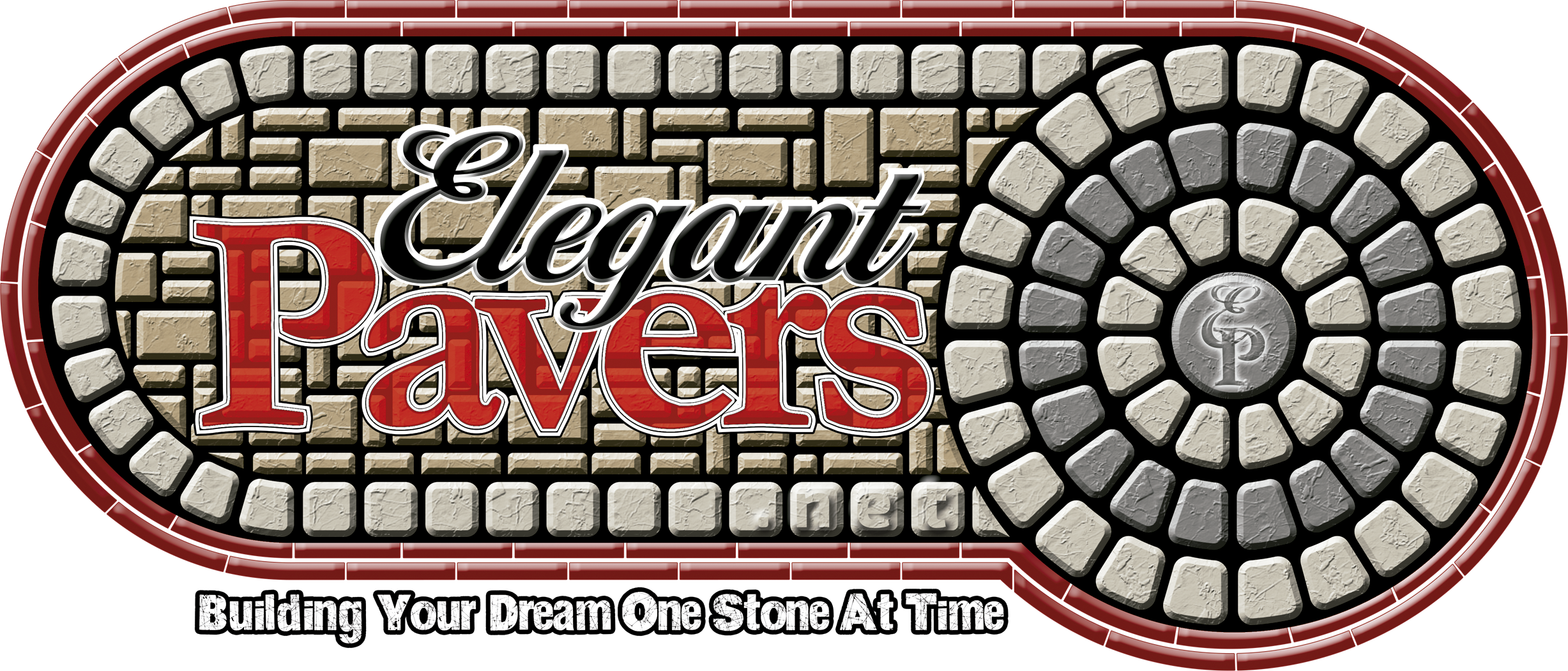

There is a chance that after a few weeks or months pass, a white haze may
appear on the surface of the pavers. This is known as efflorescence. It may
appear randomly or in certain areas, and will be more pronounced on dark
colored pavers. The white haze may give the impression that the color of the
brick pavers are fading. When wet, the white disappears and the color of the
pavers are enhanced. When they dry, the white haze reappears.
There is no reason to be concerned that your pavers are damaged or defective. The concrete pavers are experiencing a natural process. It is a condition in all cement-based products, as well as in many other paving products. But the condition will usually correct itself with time and exposure to the elements. Here in Florida it only takes between 2-4 weeks after installation depending on the season. The reason it is season dependent will be explained in the next section.
All concrete products contain cement, which produces lime or water soluble calcium oxide. Lime can also be in the bedding sand, aggregate base materials, or soil. Although concrete pavers are solid, strong and very dense, they contain millions of microscopic capillaries that run from the interior of the surface. Moisture from rain, sprinkler systems, underground sources, poor site drainage, or dew enters these microscopic capillaries. Calcium oxide inside the paver reacts with the water in the capillaries and forms calcium hydroxide. This rises to the surface, reacts with the carbon dioxide in the air and forms a white haze of calcium carbonate. When moisture on the surface evaporates, the white haze of efflorescence becomes visible. Most states, especially northern states don’t have the subtropical climate that we have here in the Pasco county, Hernando county & Hillsborough county Florida. Some people may be surprised that we actually have rivers flowing below our feet in the ground. All this moisture in the ground permeates through the soil, through the paver base material and throughout the brick paver itself. The reason this is important is because the process of releasing efflorescence is definitely expedited here in the Tampa Florida region, as well as further south. Up north, this process may take up to 4 months before the efflorescence has naturally released from the brick paver surface. In Florida however, it can take as little as 2 weeks during the rainy season. Not all pavers will have efflorescence visible after install. Some may not demonstrate signs of efflorescence.
Do not seal pavers sooner than 2 (two) weeks after install in florida! Sealing pavers prior to them having the opportunity to release any efflorescence that may be within each individual brick paver. If you do have them sealed right after installation, that sealer can prevent the calcium carbonate to evaporate into the air, and the sealer will trap that white haze into the pavers, leaving you with a very unsightly mess. Most reputable brick paver installation companies know about the efflorescence process, but will still offer sealing services in order to put a few hundred more dollars into their pockets. We have had our customers tell us that once the efflorescence was trapped under the sealer, brick paver installation companies will tell the home owner that it is a natural process and they are not responsible for the efflorescence and it is not covered under warranty. However, often times, the brick paver manufacturers who abide by ICPI (Interlocking Concrete Pavement Institute, www.icpi.org) standards or offering free replacement paves for each individual brick paver effected by this process. Which will also benefit the paver installer who now will charge you to remove the effected pavers, and install new. Costing the home owner more money. Don’t be bamboozled by these brick paver installers that offer sealing services immediately after installation for a discounted price. You may end up spending 3x the amount to have the sealer stripped, efflorescence chemically removed and re-sealed.
Most producers of pavers put chemical additives in the concrete to reduce the likelihood of efflorescence. In most cases, these additives do the job. Completely eliminating the chance of efflorescence, however, isn’t possible because it’s a natural byproduct of hardened concrete. It will stop when no more calcium hydroxide is available to more to the surface. There are cleaners available that can remove efflorescence. These will enhance the natural beauty of your concrete paver product.
When will efflorescence stop?
When the supply of calcium hydroxide is exhausted. If you live in an area of frequent rain and sunny days, efflorescence and its passing may occur quickly. The process may take much longer in drier climates.
Will efflorescence go away naturally?
Since many factors are involved in its formation, it is difficult to determine when efflorescence will stop. Just as it appears naturally, efflorescence will eventually disappear. Over time, rainwater can wash and wear it away. Often times, here in Florida for example, this time frame can be as short as 2 weeks in the rainy season, and as long as 6 weeks during droughts or winter times.
Can efflorescence be removed without the wait?
Yes, efflorescence can be chemically removed if you just can’t take the wait. Again, this process can be as short as 2 weeks. There are remedies we can provide you with which will definitely help expedite this process regardless of season, which will save you as the brick paver surface owner, a lot of money.
